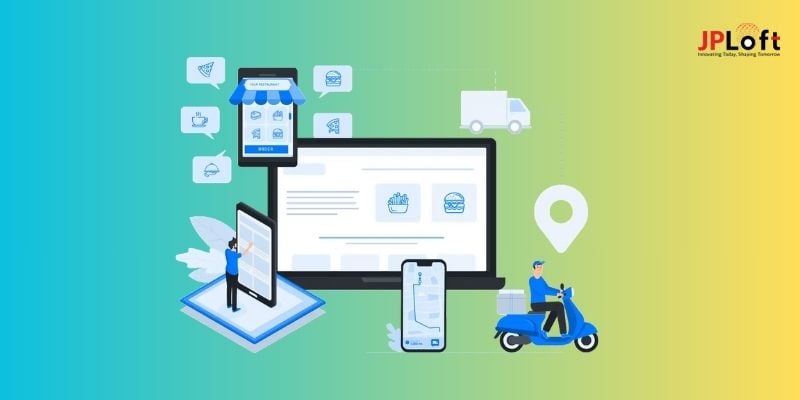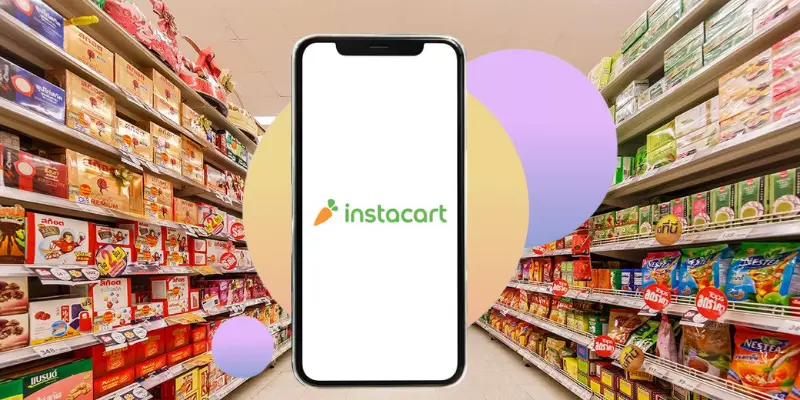In today's culinary landscape, where technology transforms dining experiences, Restaurant Apps are becoming indispensable tools. This paradigm shift results from the rapid advancement in mobile technology and the efforts of app development companies dedicated to optimising eating journeys.
This article explores the world of Restaurant Apps and some of the best offerings that have transformed how we interact with food. These applications go far beyond the traditional brick-and-mortar dining experience by providing customers with convenience, customization, and culinary exploration at their fingertips.
Restaurant Apps are a gateway to many culinary delights. From reservation systems and menu customization tools to interactive menus and personalized experience offerings, Restaurant Apps provide convenient dining services tailored to modern diners' evolving preferences. As customers seek personalized dining experiences over impersonal ones, Restaurant Apps have emerged as critical enablers.
Behind the scenes, these apps are developed by mobile app development companies with an eye on technological trends and user behavior. These companies are vital in shaping the features and functionality that give users a great dining experience through Restaurant Apps.
Also read: How to Hire Restaurant App Developers
Top 10 Restaurant Apps
We will explore the top 10 Restaurant Apps available in the USA, outlining their key features and how they help create an effortless dining experience.
1. OpenTable: Reservations Made Easy
OpenTable is an industry leader in restaurant reservation technology, providing users with easy reservations at thousands of establishments nationwide. Their app boasts real-time availability information, user reviews, and even loyalty rewards, making OpenTable one of the premier solutions available today for hassle-free table reservations.
OpenTable's user-friendly interface and expansive restaurant database make it a vital resource for planning dining experiences.
2. Grubhub - the Gateway to Food Delivery
Grubhub has revolutionised how Americans order their meals online. The platform connects users directly with local restaurants and offers an impressive variety of cuisines for delivery or pick-up.
Grubhub stands out among competing delivery platforms by its intuitive user experience, real-time tracking capabilities, and various payment options, making it ideal for people seeking convenient dining without leaving home. Furthermore, its expansive network and special deals add further appeal.
3. Uber Eats Delivering Speedy Meals
Utilizing Uber's vast network of drivers, Uber Eats brings on-demand food delivery convenience to users across the US. The app's seamless ordering process includes real-time tracking for accurate ordering and features an array of restaurant choices for rapid food service.
Through integration with Uber's ecosystem, users can take advantage of an all-encompassing solution for transportation and dining - making UberEats one of the leading competitors among restaurant app platforms.
4. DoorDash Delivers Delightfully
DoorDash stands out among top Restaurant Apps by providing an intuitive platform for food delivery. Boasting features like DashPass for free delivery and exclusive discounts, DoorDash excels as a customer-oriented app whose primary mission is ensuring high food quality during deliveries while supporting local businesses. These unique attributes contribute significantly to its enormous popularity among Americans.
5. Yelp: Beyond Restaurant Reviews
While Yelp may have gained prominence through restaurant reviews, its platform allows people to discover and explore local businesses. Yelp provides features for restaurant discovery and user-generated reviews to aid consumers when making informed dining choices.
Yelp offers foodies an enhanced restaurant-search experience by integrating photos, menus, and business details, making it a helpful tool.
6. Postmates Delivers Anything, Anytime and Anywhere
Postmates is more than a food delivery service: users can utilize its restaurant delivery feature with its extensive network of local couriers to guarantee fast and reliable deliveries to any address worldwide.
Real-time tracking, in-app messaging, and multiple delivery options make the app appealing to those searching for more than simple food delivery services.
7. ChowNow: Empowering Local Restaurants
ChowNow stands out by helping local restaurants establish online ordering systems to strengthen customer relations directly. By keeping local ordering systems independent from national ones, this approach ensures direct relationships are fostered between customers and restaurants alike.
ChowNow provides users with an effortless ordering experience, offering features such as scheduled deliveries, customized menus, and loyalty programs - while supporting local establishments to promote sustainability and expansion within their neighborhoods.
8. Tock: Enhancing Fine Dining Experiences
Tock provides unique and luxurious dining experiences. Their reservation and event booking platform allows users to reserve tables at fine dining establishments and gives access to tickets for exclusive culinary events.
Tock's commitment to offering an extraordinary dining experience sets it apart in the restaurant app market and has won widespread praise among gourmet food enthusiasts looking for new culinary adventures.
9. Allset: Enjoy Sit-Down Meals without the Wait
Allset is designed for busy individuals seeking an efficient dining experience without lengthy wait times at their favorite restaurants. Users can browse participating establishments, preorder meals from within the app, and pay through Allset itself; its emphasis on time efficiency makes Allset an appealing option for professionals and people on tight schedules, offering swift yet enjoyable dining experiences without hassles or wait time.
10. Resy: Elevating Reservations with Exclusivity
Resy elevates restaurant reservations by infusing an air of exclusivity into them. Working closely with top-tier eateries, this app gives users access to reservations at highly sought-after establishments.
Resy goes beyond transactional aspects to provide users with unique dining experiences and insider access to events. For those searching for luxurious dining ventures, Resy stands as an outstanding platform.
Factors Influencing Restaurant App Development Costs
Factors impacting the costs of developing Restaurant Apps on Android and iOS platforms are examined here.
Platform Selection: Android Vs. iOS
Selecting an appropriate platform dramatically impacts the overall costs associated with restaurant app development. Restaurant owners must decide between developing for Android, iOS, or both platforms before beginning. Each has specific development requirements and fees that differ significantly, though Android app development is considered more cost-effective initially due to being open source.
However, iOS app development often comes with higher upfront costs due to its closed ecosystem; however, a streamlined development process and standard devices used throughout production can significantly decrease long-term maintenance expenses.
App Features and Complexity
App complexity and richness immediately affect development costs for Restaurant Apps. Even essential apps might include features like menu display, online ordering, and reservation management that significantly add to development expenses.
Complex apps with features like loyalty programs, push notifications, payment gateways, and integration with third-party services (e.g., delivery platforms) quickly increase development costs as complexity rises. A careful examination of essential and advanced features must be conducted to find an optimum balance between functionality and budget constraints.
User Interface and Experience Design
An appealing, user-centric UI/UX design is vital to the success of Restaurant Apps. Investment in thoughtful UX/UI design will increase customer engagement, but creating one requires additional design efforts, which incur costs associated with development efforts.
Custom graphics, animations, and seamless navigation can enhance user experiences but may incur extra expenses.
Integrating Third-Party Services
Restaurant Apps rely heavily on third-party services for payment processing, location services, and social media integration - while using existing services may reduce development time but incur licensing or usage-based charges that must be factored into any decisions regarding which third-party integration should take place to maximize performance while controlling costs and remaining within budget.
Security Measures and Compliance
To ensure the security of customer data and payments, Restaurant Apps must be developed with stringent measures.
Compliance with industry regulations and standards such as PCI DSS can add significant complexity and costs to the development process.
Scalability and Upgrades
It is paramount to its success to anticipate future growth by accommodating scalability within an app architecture. Although additional initial costs may arise, having such an infrastructure allows the app to quickly adjust increased user traffic and new features without interrupting performance or end-user experience.
Planned upgrades and updates are also crucial in remaining relevant and competitive. But these costs must also be factored into your overall budget.
Testing and Quality Assurance
Thorough testing is critical to guarantee Restaurant Apps' functionality, performance, and security. Testing across devices, operating systems, and network conditions also reduces development costs overall.
Investment in quality assurance processes is integral for identifying and rectifying problems before an app goes live, thus saving costs associated with post-launch bug fixes and updates.
also read: The Essential Guide to Restaurant App Development Key Features and Trends
Breakdown of Potential Costs Involved in Developing Restaurant Apps for Both Android and iOS Platforms
The various expenses associated with Android app development, iOS app development, and the overall development of Restaurant Apps.
Market Research and Planning
It is essential to thoroughly research the market before developing a product to understand your customers' needs, preferences, and competitors. This involves identifying target demographics, analyzing similar apps, and planning features. Market research and planning costs can range from $1,000 to $5,000, depending on the depth of analysis and the app's complexity.
App Design
An appealing and user-friendly design is critical for the success of Restaurant Apps. Design costs include wireframing, prototyping, and UI/UX design. Costs for designing an application can range from $5,000 to $15,000.
App Development
Android App Development is a separate process with its costs. Android app development is typically cheaper than iOS because of its diverse devices and open-source platform. On the other hand, iOS app development involves costs related to Apple's stringent guidelines and limited device variability.
Android App Development
-
Coding and Programming: In this phase, costs vary based on the complexity and features/functionalities required of an Android app; the budget is anywhere between $10,000-30,000.
-
Testing and Debugging: Testing is vital to ensuring an app runs seamlessly on multiple Android devices; testing costs typically range between $5,000 and $ 10,000 for testing purposes.
-
Incorporation of Features: Integrating features like payment gateways, real-time updates, and push notifications increases overall costs; these costs could range between $5,000 and $15,000.
iOS App Development
-
Coding and Programming: In this phase, costs vary based on the complexity and features functionalities required of an Android app; budget anywhere between $10,000-30,000.
-
Testing and Debugging: Testing is vital to ensure an app runs seamlessly on multiple Android devices; testing costs typically range between $5,000-10,000 for testing purposes.
-
Incorporation of Features: Integrating features like payment gateways, real-time updates, and push notifications increases overall costs. These costs could range anywhere between $5,000 to $15,000.
Backend Development
A backend system stores data, authenticates users, and enables app functionality. Backend development costs vary based on the app's complexity and technology chosen - budget between $15k-40k for an extensive backend system.
Database Administration
Efficient database administration protects user information, menu items, and order history. Depending on complexity and scale-ability requirements, costs associated with developing and administering databases could range between $5,000-$15,000.
Security Features
Given the criticality of user data, implementing robust security features is necessary. Security solutions cost between $5,000 and $10,000 to implement effectively; such services include encryption, secure authentication, and data protection services.
Quality Assurance and Testing
Conducting stringent QA/testing sessions is vital to identify bugs that hinder user experiences and resolve them quickly. Depending on its scope, it costs anywhere from $10,000 to $20,000.
Deployment and App Store Fees
Deploying an app on both Google Play Store and Apple App Store incurs one-off registration and annual subscription fees: $25 on Google and $99.99 for Apple; both platforms also take a percentage (15-30%) from each transaction within their forum.
Maintenance and Updates
Ongoing app maintenance costs could range between $5,000-$15,000 annually for maintaining compatibility across devices and operating system versions. Ongoing maintenance costs could incur between $5,000-15,000 each year.
Conclusion
Technology's impactful shift has dramatically altered our dining experiences and revolutionized how we experience cuisine. A list of Top Ten Restaurant Apps showcases this progressive digital transformation and shows where dining convenience lies ahead for exploration and comfort.
These Restaurant Apps go beyond virtual menus; they represent an elegant combination of cutting-edge technology with culinary excellence, giving users access to various cuisines, personalized recommendations, and convenient ordering options.
These apps, with features ranging from user-friendly interfaces and advanced payment gateways, meet the evolving demands of today's consumers.
Restaurant App Development Services have taken on increased importance with competition in the culinary field escalating as more restaurants realize they require custom apps tailored specifically for them, reflecting their offerings and brand identities.
Development services are pivotal in creating user-friendly, efficient applications that enhance dining experiences digitally. Restaurant digital extensions should add something special to the digital extension experience for their diners.
FAQs
1. What Are Restaurant Apps, and How Do They Work?
Restaurant Apps are mobile applications that facilitate seamless interactions between customers and restaurants. Users can browse menus, place orders, and make reservations through these applications - creating an unparalleled dining experience!
2. How Can Restaurant Apps Benefit Both Customers and Owners?
Restaurant Apps make ordering seamless for customers while improving experiences for restaurant owners who rely on them efficiently to manage orders, build customer loyalty, and expand reach.
3. What features should I look for in a Restaurant App?
Regarding features to look out for in an ideal Restaurant App, some key areas include menu navigation, secure payment methods, order tracking capabilities, reservation capabilities, and loyalty programs. A user-friendly interface and compatibility across devices is also vital.
4. Are Restaurant Apps Secure for Online Payments?
Reputable Restaurant Apps prioritize security. They use encryption protocols to protect customer payment details, providing an environment that facilitates safe online transactions.
5. How Can I Locate Nearby Restaurants with Apps?
Many Restaurant Apps feature an easy location-based search feature to identify nearby eateries and refine searches based on cuisine, ratings, or other desired characteristics. You may use filters to narrow your results further based on cuisine preferences or even specific filters such as cuisine type/rating combination.
6. Can I customize my orders via Restaurant Apps?
Indeed, many Restaurant Apps provide customization features, enabling customers to personalize dishes according to individual tastes for an enhanced dining experience. This feature enhances personal dining experiences.
7. Are Restaurant Apps offering loyalty programs?
Absolutely - many offer programs to reward repeat customers and build customer relationships. Users can earn points with every order redeemed for discounts, free items, or special promotions.
8. How Do Restaurant Apps Handle Food Delivery?
Some apps feature their delivery services, while others partner with third-party delivery platforms for optimal delivery experience.
9. Are Restaurant Apps Compatible with Both iOS and Android Operating Systems?
Yes, the most famous Restaurant Apps are accessible across both operating systems - users can download these applications through their respective app stores to take full advantage of them on any of their preferred devices.
10.Can Restaurant Apps Make Reservations Possible?
Absolutely. Most Restaurant Apps enable users to make reservations to ensure a table will be ready when they arrive - essential during busy dining periods! Using these applications as reservation services proves advantageous when table spaces fill quickly at popular destinations or dining hours.











